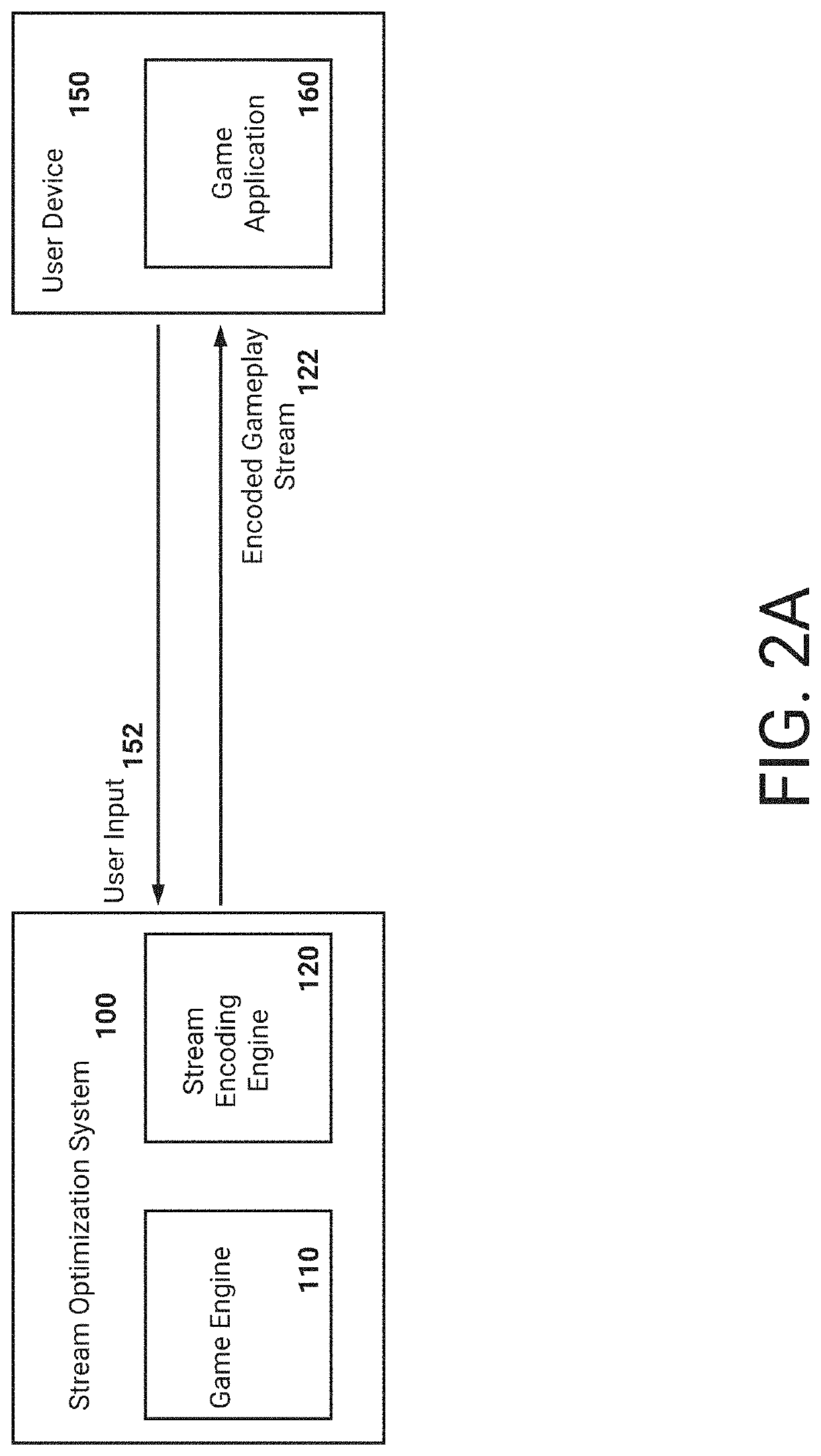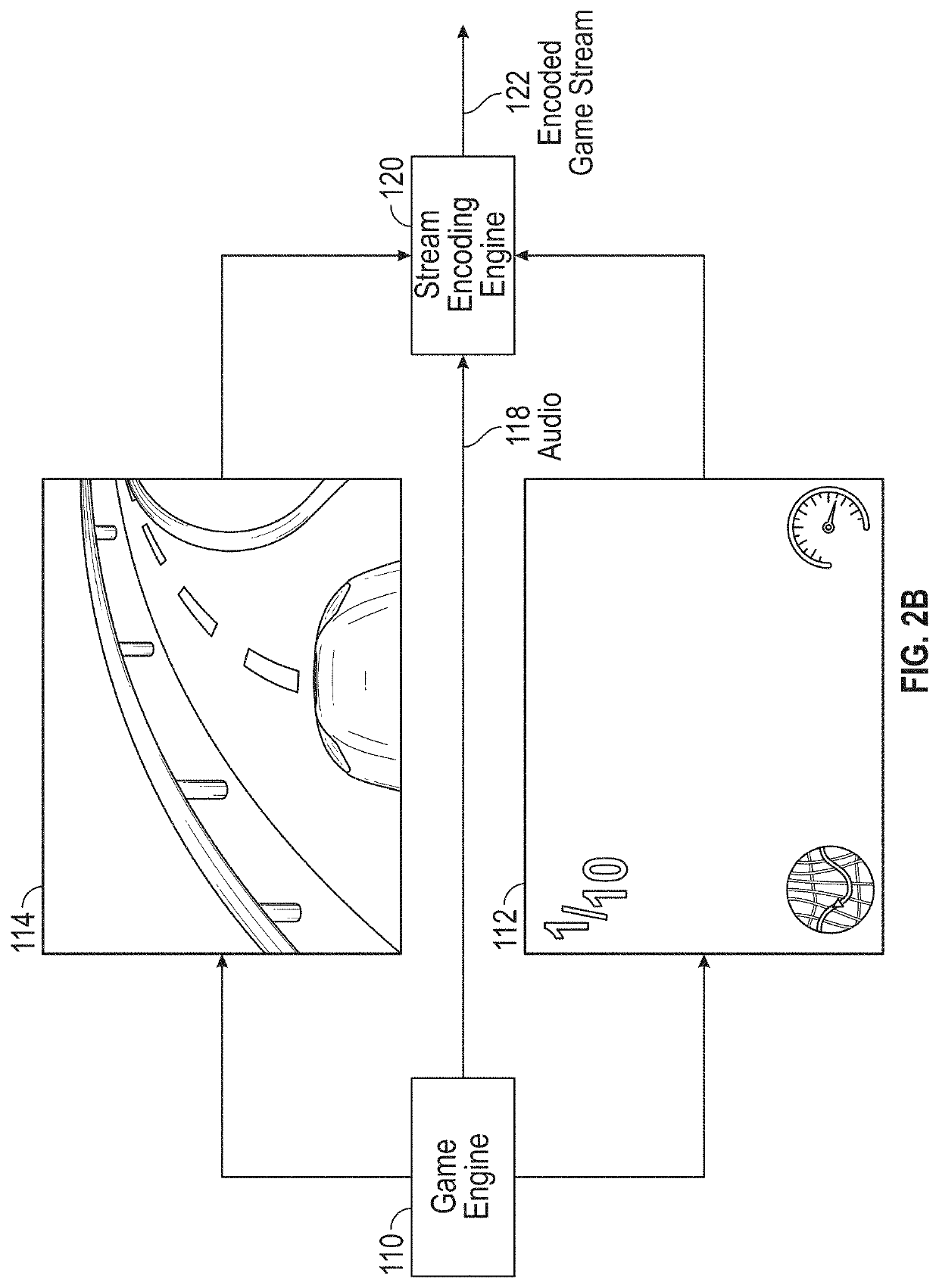User interface rendering and post processing during video game streaming
a video game and user interface technology, applied in the field of computer technology, can solve the problems of reducing the playability of a streamed video game, and affecting the quality of the rendered output, so as to achieve the effect of easy quality degradation, reduced playability, and reduced difficulty
- Summary
- Abstract
- Description
- Claims
- Application Information
AI Technical Summary
Benefits of technology
Problems solved by technology
Method used
Image
Examples
example process
[0149 Flows
[0150]FIG. 9 illustrates a flowchart of an example process for providing an encoded gameplay stream and geometry information for the stream to a user device. For convenience, the process 900 will be described as being performed by a system of one or more computers (e.g., the stream optimization system 100).
[0151]At block 902, the system receives a request from a user device for a video game to be executed and played remotely. At block 904, the system causes execution of the video game (e.g., as described above, with respect to at least FIGS. 3-5). The system can obtain information from the user device indicating its processing power. For example, the user device can provide identifiers associated with a CPU or GPU available to the user device. As another example, the user device can execute a game application (e.g., game application 160). This game application may include a small mathematical or processing task. Based on results from this task the user device 150 can dete...
embodiment 1
[0186]2. The method of embodiment 1, wherein generating a particular rendered image frame comprises:[0187]monitoring, by the system, elements to be included in the particular rendered image frame, wherein the elements comprise user interface elements and gameplay elements;[0188]generating, based on the monitored elements, a first image frame that comprises rendered user interface elements; and[0189]generating, based on the monitored elements, a second image frame that comprises rendered gameplay elements, wherein the first image frame and second image frame are combinable to represent the particular rendered image frame.
embodiment 2
[0190]3. The method of embodiment 2, wherein monitoring elements comprises identifying, by the system, draw calls issued by the video game to render each element, the draw calls identifying a type of element being rendered, and wherein the type of element comprises user interface elements or gameplay elements.
[0191]4. The method of embodiment 1, wherein for a particular rendered image frame the first elements comprise gameplay elements and wherein the second elements comprise user interface elements overlaid on the gameplay elements,[0192]wherein the first quality at which the gameplay elements are encoded is adjusted based on a detected bandwidth available to the user device to reduce a size associated with the gameplay stream,[0193]and wherein the second quality at which the user interface elements are encoded is maintained in the gameplay stream.
[0194]5. The method of embodiment 1, wherein reducing a quality of an element comprises adjusting a bitrate associated with the encoding...
PUM
 Login to View More
Login to View More Abstract
Description
Claims
Application Information
 Login to View More
Login to View More - R&D
- Intellectual Property
- Life Sciences
- Materials
- Tech Scout
- Unparalleled Data Quality
- Higher Quality Content
- 60% Fewer Hallucinations
Browse by: Latest US Patents, China's latest patents, Technical Efficacy Thesaurus, Application Domain, Technology Topic, Popular Technical Reports.
© 2025 PatSnap. All rights reserved.Legal|Privacy policy|Modern Slavery Act Transparency Statement|Sitemap|About US| Contact US: help@patsnap.com



